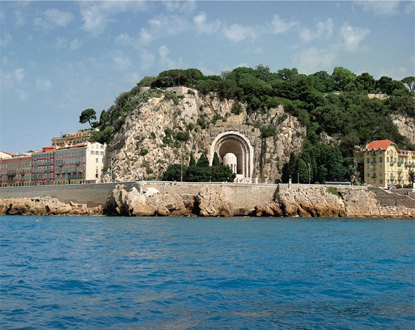Overlooking the city, 93 meters above sea level and offering an exceptional panorama, Castle Hill is an emblem of the City’s heritage. Before its destruction by Louis XIV in 1706, an imposing fortification was built there to protect the port of the Duchy of Savoy and the access to Piedmont and Italy from the Kingdom of France.
To allow the people of Nice and visitors to visualize the monumental ensemble to which the remains of the old fortification belonged, the services of the City of Nice and the Nice Côte d’Azur Metropolis (Department of Green Spaces, Department of Buildings under the scientific control of the Archaeology Service) created a 3D computer reconstruction to offer the most accurate representation possible of the former medieval palace of the Counts of Provence and then Savoy, the large fortification from the early 16th century, and the later citadel.
The excavation project, conducted as part of a Collaborative Research Project involving the City of Nice, the CEPAM laboratory (CNRS/University of Nice), and the Ministry of Culture, was initiated in 2009. It focuses on two major sites in Nice’s history: the cathedral and its surroundings, and the fortification.
This excavation program aims to address many questions about the history and settlement of the County and the city of Nice.
The excavations have already uncovered the remains of the Paleo-Christian cathedral (2nd half of the 5th century).
This year, the excavation has provided a better understanding of the first Paleo-Christian church and the medieval reconstruction, now dated between 1020 and 1049 (the date of the altar’s consecration to Saint Mary). Additionally, the excavation of the cemetery continued, revealing about forty new graves.
Finally, it was possible to examine a second building, the medieval Church of Saint John, which reuses a structure from the Paleo-Christian era.


